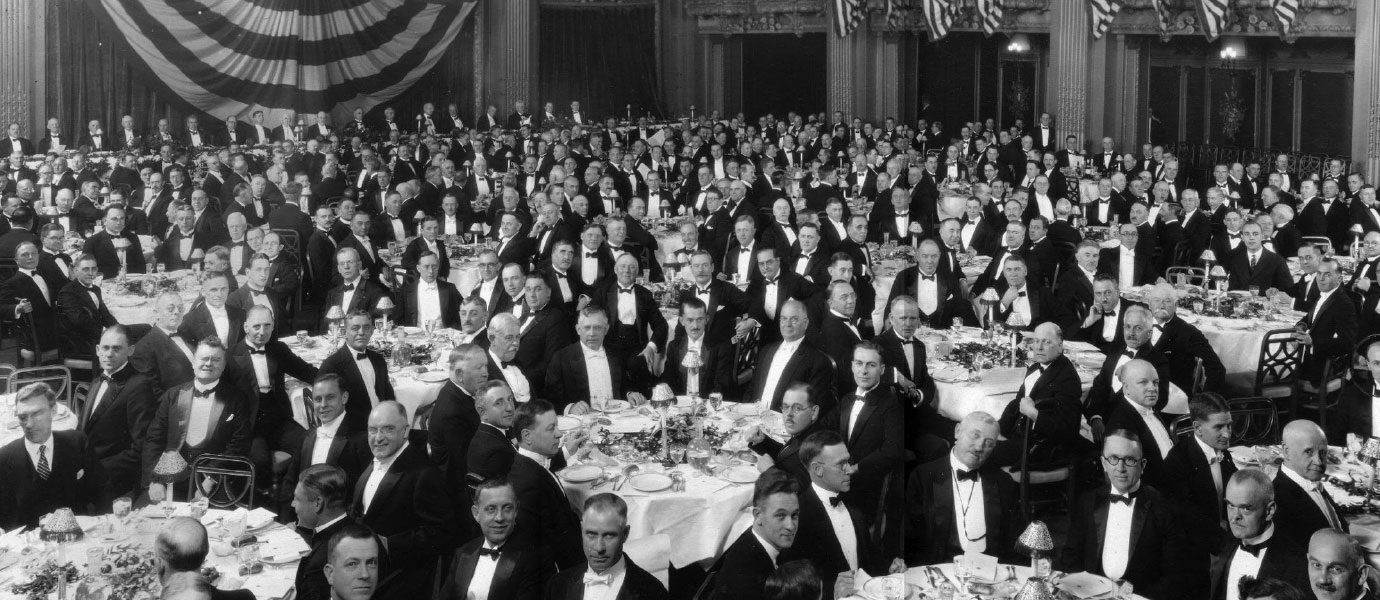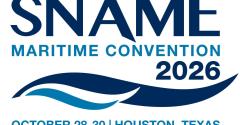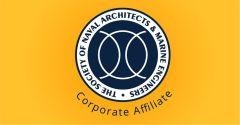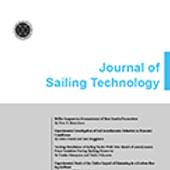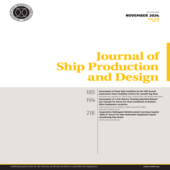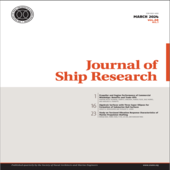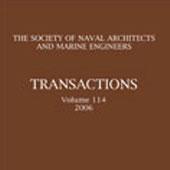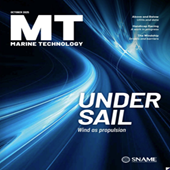Technical and research (T&R) | Bulletins and reports
The Power Allowance Task Group was organized in September 1955 in order to consider a question raised by The Committee of American Steamship Lines concerning service power allowance "to determine whether or not this requirement (i.e. Maritime Administration 25% power allowance) is in excess of normal or standard good engineering practice." The question was acknowledged and the work of the Task Group organized, and on October 7, 1957, a reply was sent to The Committee of American Steamship Lines enclosing Stevens Institute Note #416 "The Problem of Service Power Margins," and stating the preliminary conclusions of the Task Group. The reply also indicated the intention of the Task Group to submit a questionnaire to the steamship lines seeking log abstract data on various standard ships on various trade routes. Since October 1957, the questionnaire was prepared and submitted to the steamship lines; log abstract data was obtained and analyses have been made, primarily by the Davidson Laboratory. The results of these analyses by the Davidson Laboratory form a part of this report along with the conclusions and recommendations of the Task Group.
T&R Bulletin 3-11 is a 133 page soft cover book.
In January 1958, Panel M-15 (Heat Balance) of the Society of Naval Architects and Marine Engineers Technical and Research (T&R) program was formed to investigate the possibility of standardizing the assumptions and allowances and methods of treatment of heat balance calculations. The result of the Panel's work was published in November 1961 as Technical and Research Bulletin No. 3-11, "Recommended Practices for Preparing Marine Steam Power Plant Heat Balances" and found universal acceptance in service; However, the need for additional practices relating to sea trial was soon evident and the Panel in January 1968 prepared T&R Bulletin No. 3-17, "Recommended Practices for Correcting Steam Power Plant Trial Performances." Changing practices and increasing capability of marine steam power plants necessitated the revision of Bulletin No. 3-11 which was prepared under contract from the Society in 1971 under Panel's guidance.
The Society of Naval Architects and Marine Engineers Panel M -16 (Modernization of Propulsion Shaft Systems) held its 1st. meeting June 21, 1960. Various problem areas were discussed but the one area believed to be of major concern to this industry was stern tube bearing wear. Life of the after stern tube bearing was known to be very short on certain large tankers. In order to determine the extent of this problem throughout the marine industry and at the same time obtain certain information that might provide a guide to the cause of the problem, if the problem was found to exist, a questionnaire was sent to about 33 American dry cargo, ore carrier, and tanker operators. Almost 100% response was received. Data on stern tube wear of some 263 ships were obtained. This report is a summary of this data.
This Guide is concerned with pollution abatement of the ship as a whole as well as by its components. There are many aspects of design, equipment, and operation that although not commonly identified as pollution control devices or measures are nevertheless significant in the overall anti-pollution effort. Examples are the design and construction of the hull, navigational. aids, crew training and motivation, and operational and maintenance procedures, and so forth. Not only the intact vessel should be considered (and the practical means to keep it intact) but also the damaged vessel where pollution is a major problem. In such circumstances, the wastes may be bunker fuel, lube oil, liquid, and other cargo.
A boiler furnace is primarily a chemical reaction chamber, designed to promote and control the oxidation of hydrocarbon fuels. A secondary function is to absorb a portion of the reaction heat evolved. The temperatures within a boiler furnace can be controlled, to a large extent by the amount of effective Radiant Heat Absorbing Surface (RHASJ) present in the furnace. Heat is radiated from the flames (a cloud of flaming particles of carbon, ash, and molecules of gas) as a primary source, to the heat absorbing tube surfaces, with the uncooled refractory surfaces acting as an intermediary, receiving heat from the flames and reradiating this heat to the absorbing surfaces and back to the flames. Refractory surfaces reradiate heat by virtue of their own temperature, not by a reflecting ability. Refractory must, therefore, have a temperature intermediate between the flames and the heat-absorbing surfaces. The smaller the area of refractory present within the furnace, compared to the total surface, the lower will be the refractory temperature. For a given heat input or firing rate, the heat absorbed per unit area decreases with an increase in total RHAS. However, the greater the RHAS the greater will be the total amount of heat absorbed by the furnace and therefore the temperature of the gases leaving the furnace will be lower. The absorption rate, BTU per hour per square foot of RHAS is therefore an excellent criterion of furnace loading. Calculation of this absorption is, however, a very complex problem. Each designer employs his own semi-empirical methods for this computation so that these methods are proprietary. All designers commence with the same primary variable, namely, the heat input, BTU per hour input to the furnace per square foot of RHAS, and it is recommended that this be used as an approach to furnace design and performance criteria. Since marine boilers are normally fired with residual oils of nearly uniform heating values, this criterion can be reduced to lbs, of fuel oil per hour per square foot of RHAS. Such a figure is significant if used in conjunction with the standard reference fuel recommended in the T&R Bulletin No. 3-11. The present trend is toward more extensive water cooling in the form of tangent tube walls in the side, roof and rear, and in some cases in the front wall. This trend reflects the demand for less refractory maintenance, accomplished by lowering the operating temperature of the refractory. For some years, specifications for marine boilers have set forth a maximum heat release per cubic foot of furnace volume per hour, usually in the range from 65000 to 85000 BTU/cu. ft. hr. at normal load. As a performance criterion, this measures only the ability of firing equipment to maintain a satisfactory combustion condition. It is particularly misleading as a measure of refractory temperature and RHAS loading since furnace volume increases as the cube while the area increases only as of the square of the linear size increase. In calculating this fuel firing rate per square foot of RHAS, certain factors in calculating the area must be considered as given in the following sections.
T&R Bulletin 3-15 (2018) supersedes the existing T&R Bulletin 3-15 (1964).
This updated version of 3-15 has been developed by incorporating ABS and other Class Societies’ requirements based on IACS Unified Requirement A1, Anchoring Equipment, and A3, Anchor Windlass Design and Testing, as well as other International Standards such as ISO 4868. The purpose of this Guide is to provide guidance for the design and testing of marine anchor windlasses; design criteria are intended to cover hydraulic and electric motor driven windlass types, as well as address hybrid systems. Sections in the Guide include specification of equipment and design, as well as shop testing and onboard trial tests. Helpful appendices offer graphical examples of anchor and windlass types, with additional sizing charts and guidance, and an addendum providing additional information specific to the design, construction, and testing of anchor windlass systems onboard U.S. Navy auxiliary and special-purpose ships.
Originally, the Panel considered only water-cooled and moderated reactors and prepared Technical and Research Bulletin No. 3-6 which was published by the Society in March 1959. In 1962, it was decided to study similar safety recommendations for organic-cooled and moderated reactors and gas-cooled reactors. As a result of these studies, it was determined that Bulletin No. 3-6 should be revised to make the recommendations applicable to the reactor types currently under consideration for marine applications and to bring them up to date. This Bulletin, therefore, supersedes Bulletin No. 3-6. It is of particular importance to understand that these recommendations are intended as a guide to supplement the requirements of the cognizant government regulatory agencies and classification societies. Based on its work, the Panel has concluded that nuclear reactors can provide safe, reliable propulsive power without imposing unrealistic operational restrictions upon the nuclear ships in which they are installed.
One of the tasks assigned Panel M-16 (Modernization of Propulsion Shaft System) of the Society's Technical and Research Program, under the guidance of the Ships' Machinery Committee, is the Investigation and evaluation of various types of shaft bearings with their related problems under simulated and actual operating conditions. This report was prepared as a panel effort to summarize and disseminate available information on only one phase of this extensive program. It is their hope that these recommendations will be of assistance in the repair of cast copper base tail shaft liners. These recommendations deal with repair methods that are employed to recondition cast copper baseliners on tail shafts when periodic examinations reveal repairs to be necessary or desirable.
Under the guidance of the Ships Machinery Committee of The Society of Naval Architects and Marine Engineers Technical and Research Program, Panel M-16 (Modernization of Propulsion Shaft System) is investigating and evaluating various types of shaft bearings with their related problems under simulated and actual operating conditions. The first step in this investigation was the review of available information on this subject. Through the cooperation of the Department of the Navy and others, certain information was made available on the testing and use of lignum vitae as a bearing material. Panel M-16, therefore, asked Mr. Watt V. Smith to prepare this report regarding the lignum vitae bearing as part of its overall bearing investigation program.
One of the tasks assigned Panel M-16 (Modernization of Propulsion Shaft System) of The Society of Naval Architects and Marine Engineers Technical and Research Program, under the guidance of the Ships' Machinery Committee, is the investigation and evaluation of various types of shaft bearings with their related problems under simulated and actual operating conditions. This report, which supplements Bulletin No. 3-12 "Report of Ship Operators' Experience with Stern Tube Bearing Wear," was prepared as a Panel effort to summarize and disseminate information on a ship's operating experience with oil-lubricated stern tube bearings as one phase of this extensive investigation.
